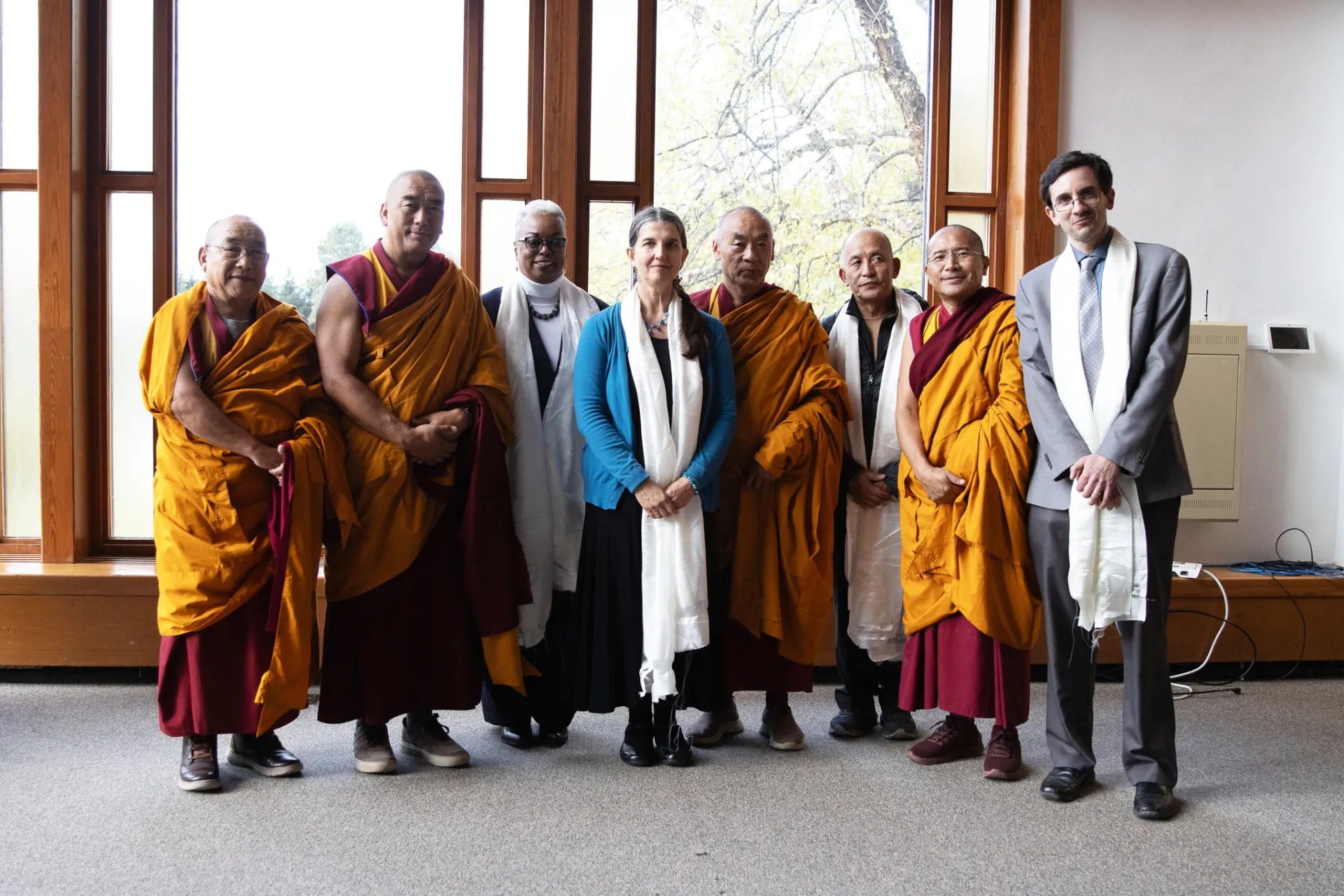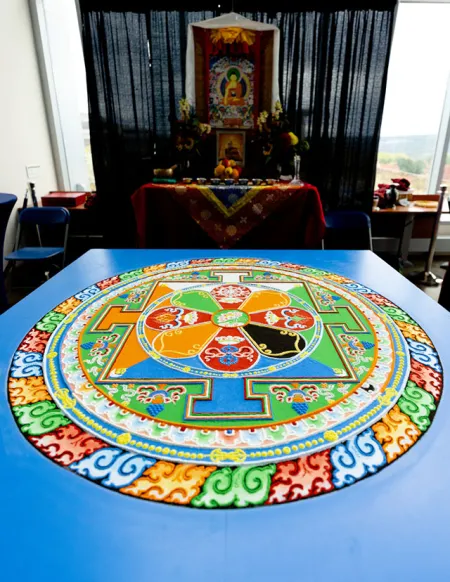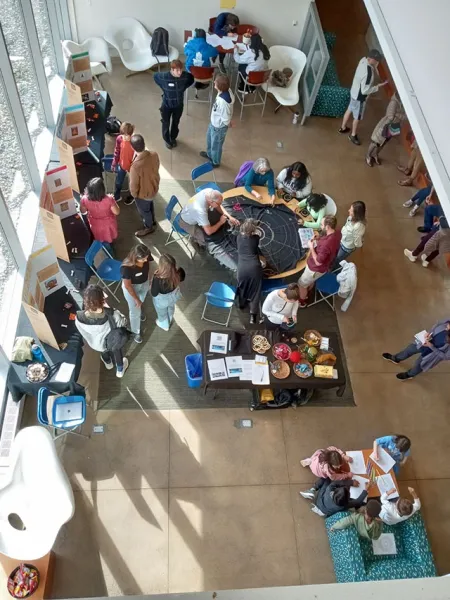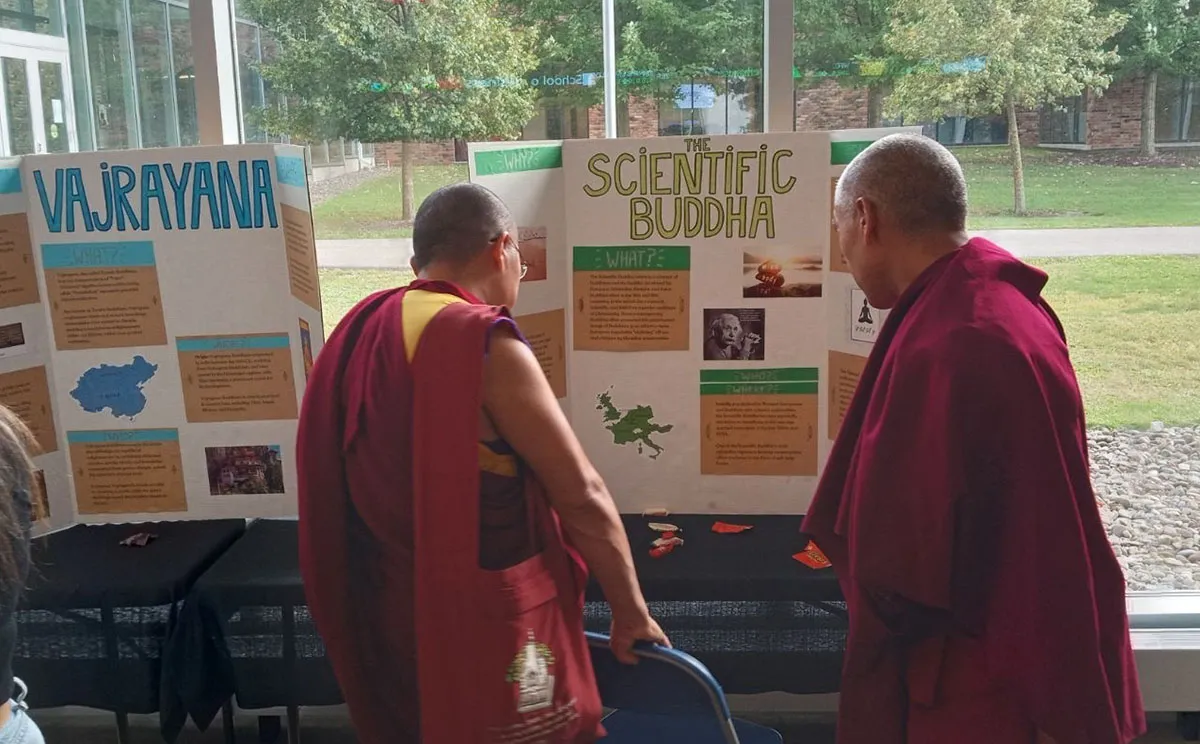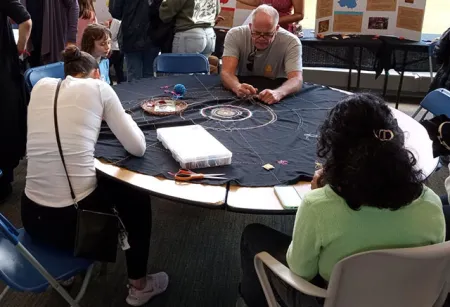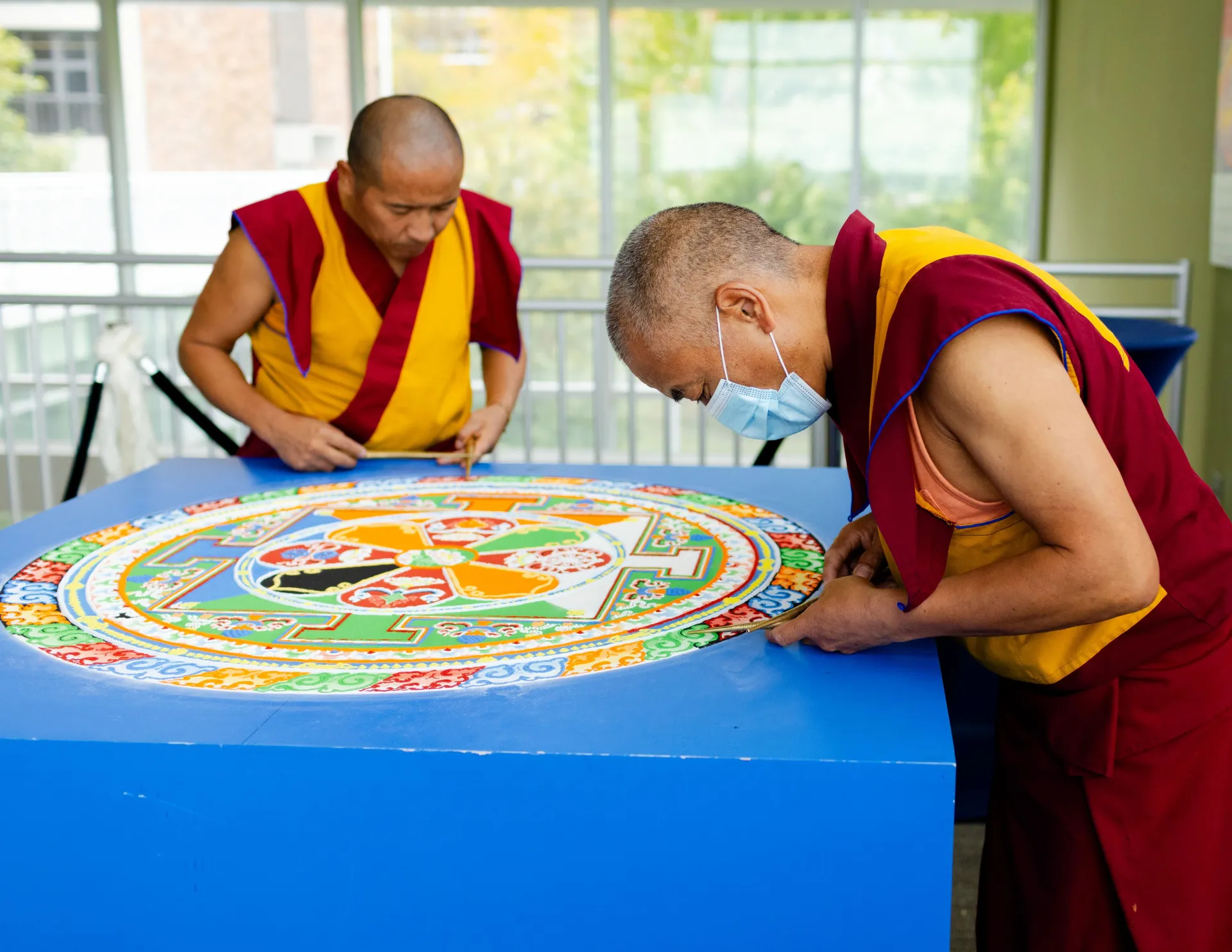From roundtable discussions to film screenings to hands-on meditative activities, in early October the Ithaca College and broader local communities were invited to participate in a program of events and learning opportunities centered around the building of a sand mandala.
For the second year in a row, IC welcomed monks from Namgyal Monastery Institute of Buddhist Studies — our neighbor on South Hill — to construct a multicolored sand mandala. Pronounced “MAHN’-duh-luh,” it is an abstract representation of a celestial being found in Tibetan Buddhism and other religious traditions.
The week kicked off with a “Sharing Sacred Objects” event held in Klingenstein Lounge.
